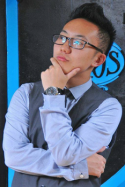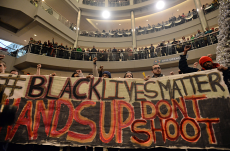 A guest post from Riki Wilchins of TrueChild. Join the discussion about gender norms on October 26 by attending a screening of “The Mask You Live In”, hosted by the George Family Foundation.
A guest post from Riki Wilchins of TrueChild. Join the discussion about gender norms on October 26 by attending a screening of “The Mask You Live In”, hosted by the George Family Foundation.
Decades of research has found that challenging harmful gender norms are a key to improving life outcomes for young people in at-risk communities.
For instance, young women who internalize rigid feminine ideals that prioritize the “three D’s” of being deferential, desirable, and depending are likely to have lower life outcomes in a cluster or related areas that include reproductive health, economic security, and education.
The same is true for young men who buy into harsh codes of manhood as defined by strength, aggression, sexual prowess, and emotional toughness. Such men are more likely to avoid condom use, to engage in risk-taking behaviors with sex or substances, to abuse girlfriends or LGBT people, and to drop out (or be kicked out) of school early.
This is one reason that major international donor institutions like CARE, UNAIDs, UNFPA, and WHO have implemented initiatives that challenge and try to change rigid gender norms, and found them effective. USAID won’t fund new programs that lack an analysis of gender norms and inequities; and PEPFAR has made changing masculine norms the centerpiece of its work in dozens of countries.
Even the staid World Bank has undertaken a very deep and highly-public effort to move gender norms to the center of its work around the globe.
As one Bank manager explained, “We’re not doing this because it’s politically correct – we’re data-driven economists – we’re doing it because the data shows it works better.”
Yet although gender impacts nearly every issue funders address, donors and grantees in the US are seldom challenged to do innovative work around gender norms.
As a senior program officer put it, “My staff and grantees get race and class, but where’s the gender analysis? What I want to know is—what happened to gender?”
Part of the answer to her question may lie in new project on young Black girls we worked on for the Heinz Endowments.
We found that Black adolescent girls and young women face specific barriers related to both race and gender which have immense effects on their health and achievement. And this was especially true for low-income Black girls, who also have challenges associated with poverty.
First, Black girls’ unique race and gendered experiences of discrimination results in multiple stresses that – over time – impair their immune systems.
Also, they must navigate social hostilities based on race as well as pressures to conform to traditional feminine ideals and those specific to Black communities.
Finally, feminine norms in the Black community often prioritize caretaking and self-sacrifice. Black girls may be silently encouraged to focus on others’ health while ignoring signals of pain and illness until their own bodies are in crisis.
The additive impact of these stresses can produce a “weathering effect,” in which Black women’s bodies become physically and biologically vulnerable, resulting in high rates of chronic disorders, reproductive health problems, infant mortality and obesity.
Lately we’ve been testing a new curriculum that helps teach young Black girls to think critically about rigid feminine norms, along with an accompanying. Trauma Informed Facilitation Guide.
We are still a couple months from having data in hand, but we have high hopes for this project. With SUNY Stony Brook’s Tech Prep, we recently tested a similar curriculum that helps girls of color to think critically about feminine norms that can hold them back from STEM interest and achievement (science, technology, engineering, and math).
The results are now in , and – as the graph above shows – girls’ improvement across the outcome metrics were so robust that – even with a very small n – the evaluators already found them “statistically significant.”
That’s how strong the impact of gender norms can be. It’s not that norms are the only variable – they’re not. After all, these are complex, intersectional problems.
It’s that gender norms are one of the last big variables that’s not being addressed. Because learning to be and be seen as a feminine young woman or a masculine young man is a primary rite of passage – perhaps the primary rite of passage – for every adolescent.
So it makes sense that if you talk with boys and girls about rigid gender norms, you get better program outcomes than if you ignore them. It’s simple:
Isn’t it time US donors started reconnecting race, class and gender in our philanthropy?



 Posted by MCF Webmaster
Posted by MCF Webmaster 







